
Ecovado could be a greener alternative to ‘green gold’
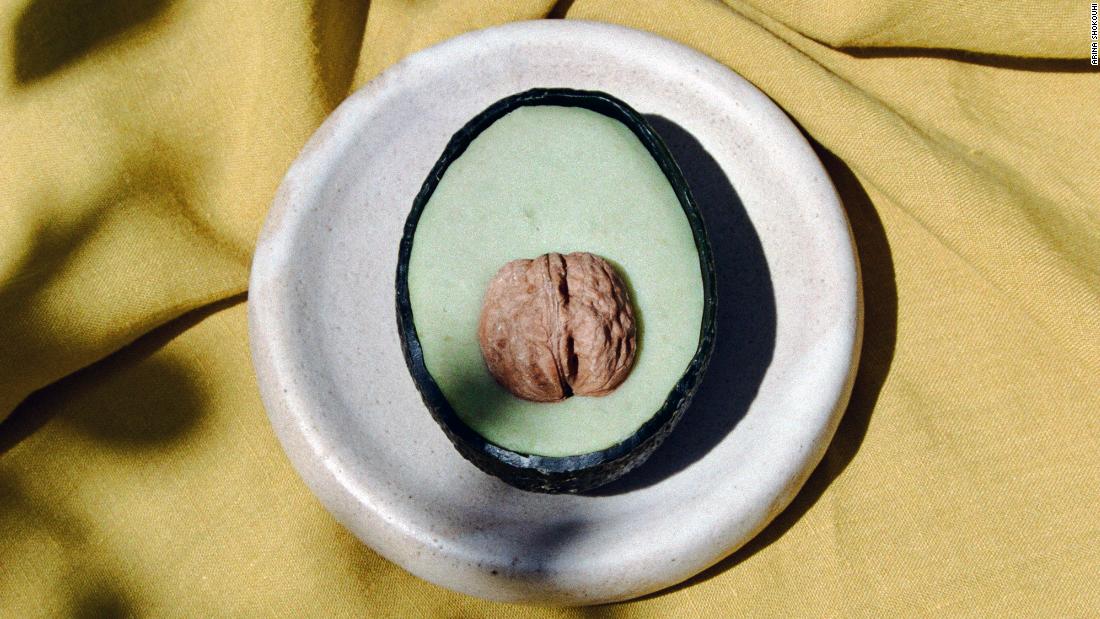
Arina Shokouhi
As the climate warms, eating sustainable foods and a plant-based diet are ways to curb carbon emissions. Innovative food alternatives can help consumers to do their part for the planet while still enjoying the tastes and textures of the food they love — like the “Ecovado” (pictured), an eco-friendly avocado alternative created by UK-based designer and researcher Arina Shokouhi. Look through the gallery to learn more.
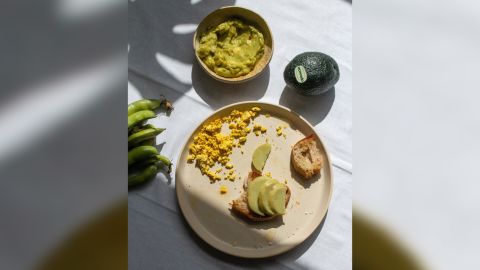
Arina Shokouhi
Made from four simple ingredients grown locally in the UK, Ecovado was created as a low-impact alternative to the resource-intensive avocado — around 2,000 liters of water are used to grow one kilogram of the fruit.
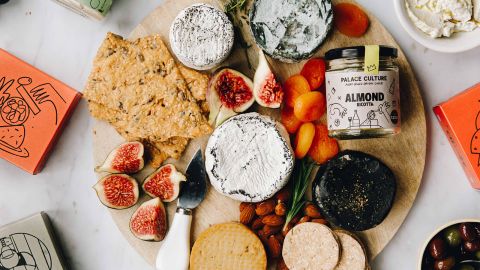
Milly Fletcher
Being plant-based means no dairy. But Palace Culture has created a variety of vegan, dairy-free cheeses (pictured) from cashew and almond milk that are sold across the UK. Closely mimicking real cheeses, the selection ranges from brie wheels to feta chunks and even a Roquefort-style moldy cheese.

OGGS
For those looking for an egg replacement, OGGS has found a solution in a unique liquid: aquafaba, also known as chickpea water. When the aquafaba is whisked, the texture is likened to egg whites and can be used for baking and other recipes like pancakes (pictured). While eggs produce the lowest amount of carbon emissions amongst animal produce, it still takes around 3,265 liters of water to produce 1 kilogram of eggs.

Impossible Foods
In recent years, there have been more plant-based meat alternatives for those who crave the taste and texture. Popular brand Impossible Foods is known for its plant-based “minced beef” and can be found on the menus of many restaurants and chains such as Burger King.

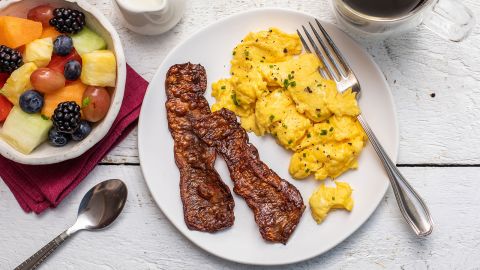
MyForest Foods
There are many plant-based bacon options on supermarket shelves these days. MyForest Foods makes their plant-based bacon, MyBacon, with mycelium, the root-like structure of mushrooms. Each “bacon” streak contains a whole cut of a mushroom and five other ingredients. Earlier this year, MyBacon received a Mindful Award.
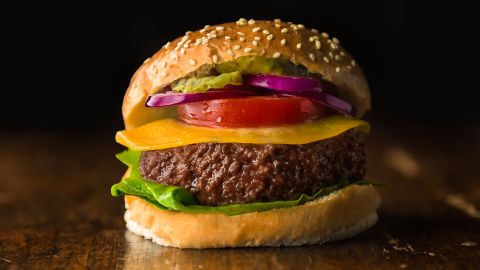
Redwan Farooq
Some scientists have opted for a different approach to producing animal-free meat. “Lab-grown” meat, like this burger patty made by Mosa Meat, is cultivated by growing animal cells and the texture can be tweaked to desire. According to a report by research consultants CE Delft, cultivated meat technology produces much less greenhouse gas emissions and uses less land and water than traditional meat.
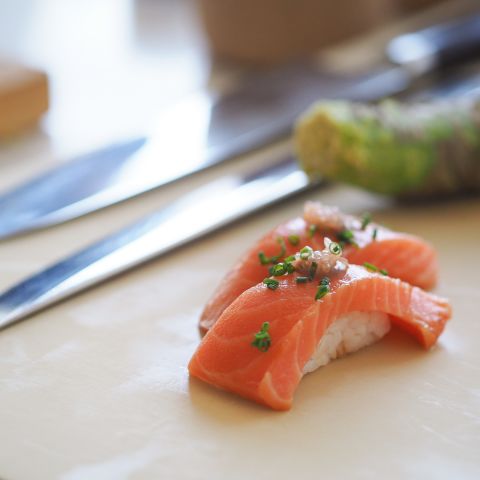
Wildtype
“Lab-grown” meat doesn’t just stop at beef or chicken. California-based Wildtype creates cultivated seafood such as salmon (pictured). Hoping to be the first company to take a cultivated fish to market, the product could help to combat overfishing and while remaining free of microplastics.
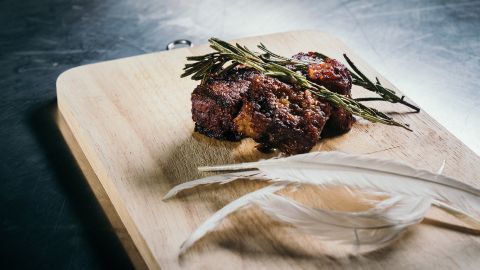
Sorawut Kittibanthorn
Food waste accounts for around 8% to 10% of the world’s greenhouse gas emissions and designer Sorawut Kittibanthorn has taken the “using the whole animal” concept to new heights with his chicken feather protein, which he has used to create carb-free pasta, wraps and feather nuggets (pictured). Chicken feathers are often a waste product of slaughterhouses, but they are 90% keratin, a protein found in our hair and nails.
CNN —
Often referred to as “green gold,” the avocado has soared in popularity in recent years. Eleven billion pounds of the fruit are consumed annually around the world according to the World Economic Forum.
However, our love of avocados comes at a significant cost to the environment: approximately 2,000 liters of water are used to grow just one kilogram of avocados, while forests are cleared to make space for avocado trees.
That’s why London-based researcher and designer Arina Shokouhi decided to develop an eco-friendly avocado alternative. Called the “Ecovado” she hopes it will inspire consumers to think twice before slicing into the fruit for breakfast toast or whipping up the next batch of guacamole.
“It can be actually a positive solution and we should just embrace it because we know that we can’t carry on living like this,” says Shokouhi.
At first glance, the Ecovado is indistinguishable from the real thing. Made with beeswax and natural food coloring containing spinach and charcoal powders, the Ecovado skin mimics avocado peel. The meat of the alternative fruit is made with four simple ingredients: broad beans as the base, apple for freshness, cold-pressed rapeseed oil for creaminess, and a sprinkle of hazelnut. A whole chestnut or hazelnut is used for the pit.
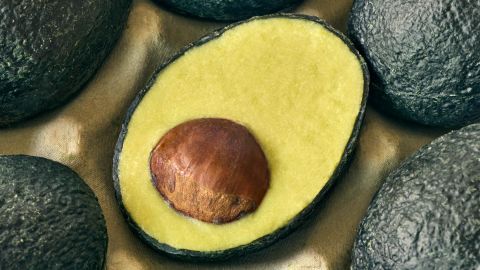
The Ecovado was developed as part of Shokouhi’s Material Futures master’s degree at Central Saint Martins art school. Having come up with the concept at the end of her first year, she forged a collaboration with University of Nottingham food scientist, Jack Wallman, who had studied the molecular properties of avocados to understand what gives them their creamy texture. It took eight months to perfect the recipe, says Shokouhi.
Creating a sustainable and appealing avocado substitute was a challenge.
“(The) choice of ingredients was very limited to begin with because I want it to be 100% local. That was my first priority,” Shokouhi says, adding that she calls this the “British” version.
Shokohui wanted the Evocado to offer the health and environmental benefits that come from eating locally sourced food.
Garden peas and broccoli were early recipe contenders, Shokouhi says, but had low local production. Making up the base of the Ecovado, broad beans, also known as fava beans, are relatively easy to grow, with around 740,000 metric tons harvested in the UK each year.
However, broad beans are molecularly different to avocados and masking their “bitter smell” was difficult, she says. Ultimately Wallman and his team found ways to balance out the ingredients and create a convincing avocado alternative.
While sticking to local ingredients and highlighting plant-based diets are key to reducing carbon emissions, sustainable food production also intersects with complex issues such as land use, ethical sourcing and labor rights, says Dr. Wayne Martindale, associate professor of food insights and sustainability at the UK’s University of Lincoln.
Developments in data collection and blockchain technology over the last decade have made the many facets of food production easier to trace and record, he says. Martindale points to the Responsible Commodities Facility which was adopted in 2021 as a commitment to zero deforestation soy cultivation in Brazil. The certification benefits farmers financially while providing assurance to customers.
Martindale believes the same could be done for avocados because “people want to know that those avocados have been grown on land that is responsibly managed.”
His team are investigating uses for avocado byproducts, including recyclable cutlery made from avocado pits and oils from the peel and pulp for use in lubricants and foods.
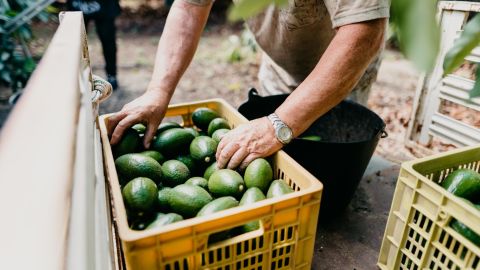
Rather than omitting imported fruits and vegetables entirely, Martindale believes moderation is a step in the right direction. Shokouhi’s Ecovado shows “incredible creativity,” he says but he questions if the product can scale to become a viable alternative to avocado imports.
Since graduating, Shokouhi’s product has had interest from potential investors, she says. While she’s still perfecting the Ecovado, she hopes it will eventually be sold in in supermarkets for a similar price to real avocados. Shokouhi has also experimented with Japanese edamame beans and is intrigued by the idea of producing Ecovado in other countries using different local ingredients in the future.
She hopes skeptics will give the Evocado a chance.
“The taste maybe is not 100% exactly like avocado,” Shokouhi says, “but that doesn’t matter as an alternative as long as you can have it on your sourdough, and it tastes good and it looks the same and it’s healthy.”
Source: https://www.cnn.com/2022/08/12/europe/ecovado-climate-scn-spc-intl/index.html

















